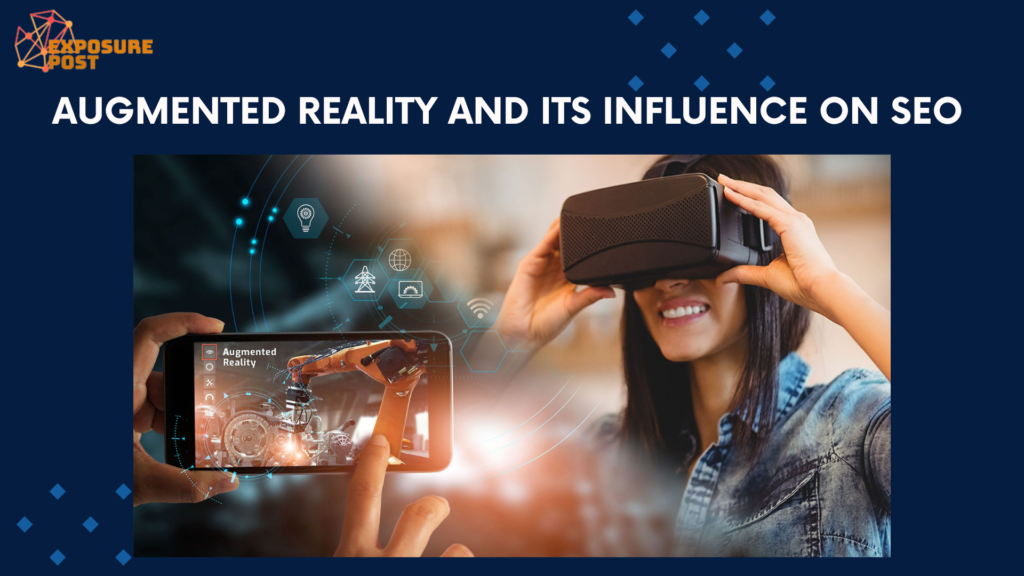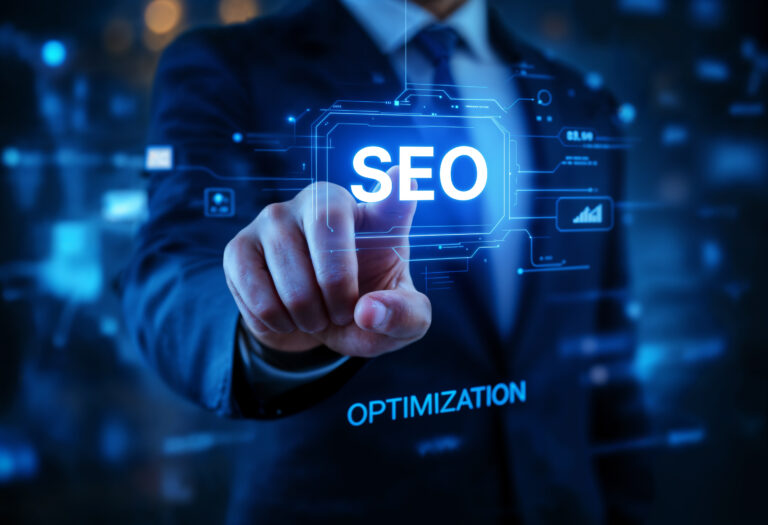
SEO is a never-ending process that varies according to the changes in digital trends offering specialists better opportunities to optimize strategies and improve online search behaviors. Among various SEO trends, Augmented Reality (AR) is becoming a new buzzword influencing how businesses promote their product and services and rank better on the SERP.
With the AR market projected to surpass $50 billion by 2027, it’s time for businesses to buckle-ip and optimize their SEO with advanced AR experiences to improve customer experience and engagement.
The reason is that AR-driven searches prioritize visual discovery rather than textual queries and encourage companies to ramp up their processes for image optimization, structured metadata, and mobile-friendliness. Similarly, the rise of AR-powered searches like Google Lens and AI visual recognition allows users to search for what they with better text recognition. Today, Google Lens handles more than 20 billion searches each month.
Today SEO is not only about ranking keywords or backlinks, it’s more about creating AR-friendly SEO content with features AR-rich snippets, 3D content, and location-based AR and immersive product demonstrations for enhanced visibility on the result pages.
So, let us better understand what is Augmented Reality and how is it going to transform the future of SEO in the coming few years!!
What Is Augmented Reality And Its Impact On SEO
Augmented Reality (AR) layers the visual information into the real world. It optimizes the live image according to the user’s surroundings to provide a more intuitive 3D experience.
Around 80% of the knowledge acquired by the brain is visual, and by delivering that information through visual channels having a spatial quality like augmented reality, we will provide the brain with an easy direct mode to access knowledge.
For example, if you ever played the game Pokemon GO or used Snapchat filters, you already had first-hand experience with Augmented Reality.
Although AR applications mostly deal with the gaming world, now the trends are changing with AR becoming an important part of SEO, providing AR-based content that ranks higher on the SERP.
| Let’s say you are looking for a new pair of sneakers online, and, instead of scrolling images, you can use the camera of your phone to place a 3D model of the shoes in your space and see exactly how they look from every corner. This is Augmented Reality, providing advanced interactivity that takes the user experience to another level while presenting never-before-seen opportunities for businesses to break through and climb higher in Google rankings. |
As we expect certain big changes in the coming few years, here are some of the evolving AR landscapes that will influence the process of Search Engine Optimization.
1. The Significance of Local SEO Will Grow
Local SEO should be the targeted area for anyone looking to rank high on Google. The fusion of AR in SEO will further enhance it by allowing users to scan a code on their mobile devices and get all the relevant information about the businesses in the local area.
- This information will include everything from images to business ratings and reviews.
- Using applications such as Wikitude or Yelp, one can offer location-specific AR experiences.
- For instance, a special offer can be given to someone who is within walking distance of the business.
As a business owner, you must ensure that all your business information is current in local listings to benefit from the raging popularity of AR.
Some of the key aspects businesses need to take care of include:
- Optimizing Google Business Profile Listings
It will become imperative to optimize Google My Business listings. After scanning a location, the following things that users will see are a virtual image of the building as well as competitor listings.
Image Source: Yandex.com
A prospective customer would want to walk to your business location if your listing is compelling enough.
- Strengthening Citations
Local directory listings have always been best in reaching the right searchers.
Therefore, businesses need to rank in the directory apps providing improved AR experience to searchers. This is going to strengthen your listing to stay competitive in the search space.
- Ratings and Reviews
Augmented reality turns reviews and ratings into real-time. The latest reviews and ratings can be found hovering over the places a user crosses. The more positive reviews and ratings you drive and get for your business, the better it will be for your search results as well as revenues.
- Geo Location-Based Targeting
Although more than 68% of marketers are already using location-based targeting, Geo Augmented reality takes it to the next level.
AR allows you to send offers and deals to users, in the form of an AR experience, that are near to your business location. Such deals can be passed through AR software downloaded to the user’s smartphone.
For instance:
- If you are walking past your favourite burger joint, and suddenly the picture of a Burger Combo deal might just flash in front of you. This is a form of Marker-based AR experience that is triggered by physical objects. Marker-less AR experience is triggered by user location/preferences and search queries etc.
2. Digital Experiences Will Gain Mainstream Popularity
While designing websites, the inclusion of AR will revolutionize the way you create different elements. More and more websites will harness AR/VR technology to provide much better and more engaging user experiences. Such experiences might have a mix of real and virtual present elements, which could find a multitude of applications.
For example:
A significant player in the beauty retail market, Sephora has made further enhancements in their commercial customer experience with augmented reality (AR) through the Virtual Artist application.
- With the app, users can virtually try on products from the comfort of their own homes.
- The Virtual Artist features thousands of makeup products, from lipsticks to eyeshadows—using the camera on the user’s smartphone- and the optional application allows the user to see how that lipstick or shadow would look.
The interactive feature uses facial recognition technology to perform real-time facial mapping while placing products on the facial features of the user, allowing customers to play with different shades and techniques without leaving their homes.
- A successful AR among its digital platform has therefore increased the engagement of users while boosting online sales with the assurance that trying the products virtually gives them the confidence to choose online.
- This is a unique way of using immersive technologies to enhance user experience, increasing SEO metrics such as time on site and decreased bounce rates.
Image Source: Youtube Screenshot
3. More Focus on Visual Search and Interactive Content
Google now processes more than 99,000 search queries per second. To make sure that these queries are relevant, Googe has now come up with voice and image searches for a better user experience including factors like user’s search history, location and overall preferences.
To further elevate the user search experience, Google has now started putting money in AR projects such as Tango and virtual reality initiatives like Daydream, The primary goal is to reinforce its position as the world’s most widely used search engine.
As AR-based content is fast gaining popularity, its impact on search engine results pages will gradually increase. Search is transforming from traditional text-based queries to one rich in interactivity, animation, and even immersive video.
The following change will also be significant for SEO:
- Visual search will become more pronounced: AR-infused content will compel search engines to elevate interactive and multimedia-driven results.
- Engagement signals will get better: Users having AR experiences will contribute to increased dwelling time and lesser bounce rates; thus, improving their rankings.
- Structured data optimization: To accurately index and rank interactive content, search engines will need metadata and structured data that pertain particularly to AR.
- Optimized for mobile and AR: Content must be evaluated for accessibility and discoverability on mobile and AR interfaces.
Being ahead in the game means marketers and entrepreneurs will have to change their SEO strategies to fit in with the changing trends of search, keeping their content visible and relevant in an ever-immersive digital world.
4. Social Media Will Be A Game-Changer For SEO
More than 5.24 billion people use social media worldwide which incorporates almost 63.9% population of the world. Although social media already has a diverse impact on SEO with a fusion of AI, it will create a whole new SEO scenario.
For example:
- The use of AR is seen in Facebook’s 360-degree video. It allows users to fully experience how the virtual world looks like in whatever they are watching on their screen.
However, it’s only the beginning of this whole AR thing. If you use platforms like Snapchat and Instagram, you’ll know their 3-D effects work.
The AR-powered interface could revolutionize product interaction and purchase decisions. This technology allows businesses insights into their audiences and greater user experiences. If you are looking to make leaps in your SEO strategy, consider AR: After all, it is still a fresh and mostly untapped territory, giving you the added bonus of being an early mover!
5. User Experience Will Be More Advanced
As AR advances so do the expectations of the users because they will decide the overall success of your SEO efforts. To gain higher conversions, you need to make your website creative and intuitive for a better user experience.
Bounce rate, time spent on a page, and interaction levels are some of the important things for SEO optimization. Using AR/VR, however, could provide better engagement and an interactive browsing experience, improving important SEO metrics.
Just imagine your business website with AR/VR technology with a mix of both physical and virtual worlds, giving users a whole new experience.
Ways in Which AR/VR Improves SEO
To maximize benefits from AR/VR technologies, businesses should:
- Core Web Vitals optimizations– They ensure that AR/VR elements do not compromise page speed.
- Improving mobile us: The majority of AR experiences are accessed via mobile devices, and mobile-friendly design must have an integral role in their SEO.
- Use structured data– Schema markup for AR content falls under the right definition of using structured data. In this case, it helps search engines to better understand and rank pages.
habr.com
6. Boosting Website’s Interaction
Website interaction serves as a benchmark as far as SEO rankings are concerned and AR/VR integration could boost user interest. Most probably, these interactive websites also encourage users to stay on the page and explore content to decrease bounce rates and increase conversions.
Interaction with search engines such as Google gives preference to the sites offering real meaningful engagement. The metrics are:
- Time on Page: The more you spend time on the page, the better the content relevancy.
- Click-through Rate (CTR): Higher CTR means users are interested in search results.
- Bounce Rate: Low bounce rates mean users are engaging with the content on the page.
- Dwell Time: The duration a visitor spends before returning to search results is crucial for ranking.
With AR/VR elements, businesses can improve these aspects thus creating an interactive and SEO-friendly site.
For example:
Conventional e-commerce works using static images and videos, while AR lets people interact with products nearly in real time. For instance,
- The IKEA Place App allows clients to visualize the furniture in their house before purchasing it.
- Sephora’s Virtual Artist allows the user to try out makeup virtually, increasing engagement and decreasing return rates.
Conclusion
Augmented Reality (AR) is here to revolutionize SEO beyond traditional ranking factors to provide an immersive search experience. As AR-powered searches, visual discovery, and interactive content gain traction, businesses must adapt to more interactive ways to stand out in the eyes of the users.
From local SEO to boosting website interaction, AR brings a whole new experience to enhance user engagement, increase conversions, and secure top rankings in search results.


